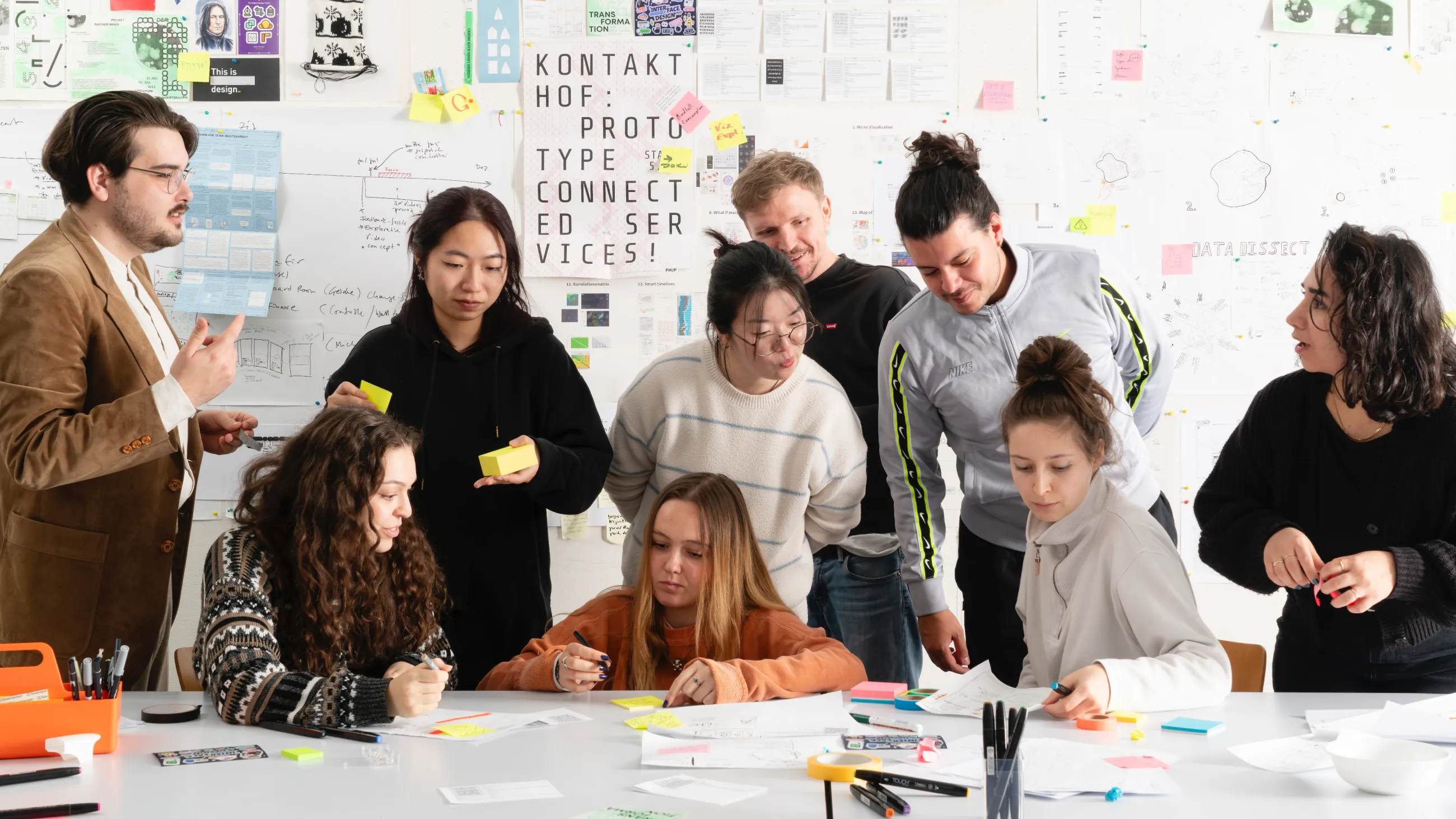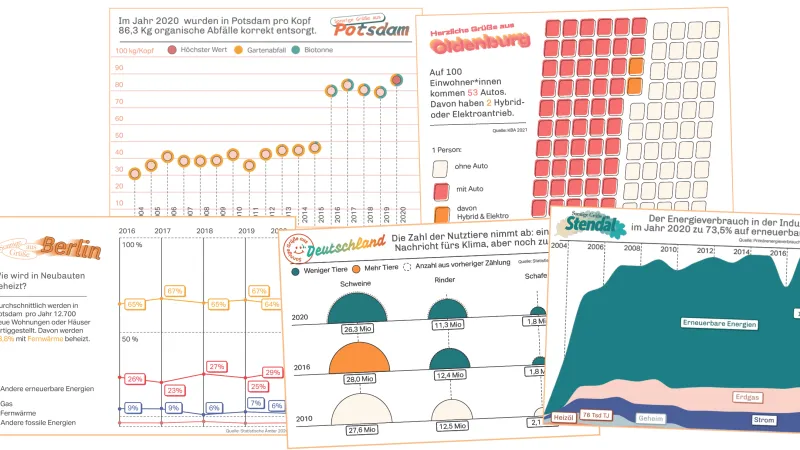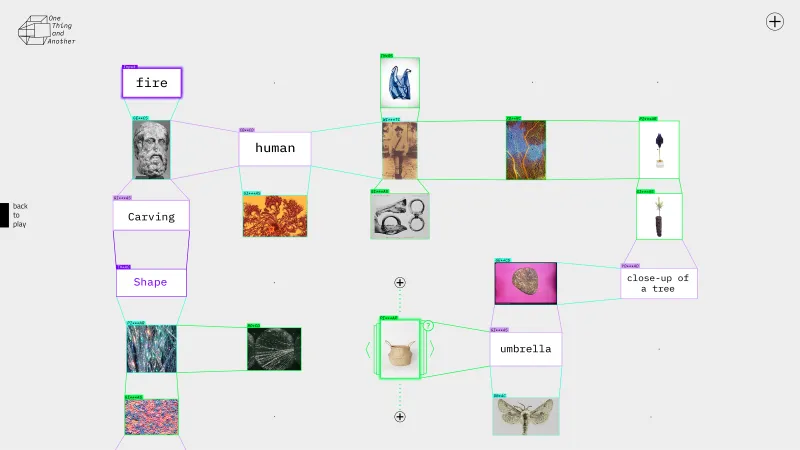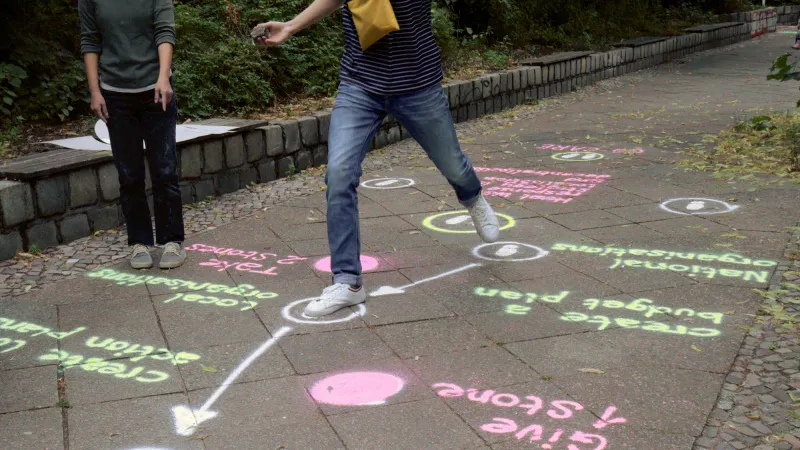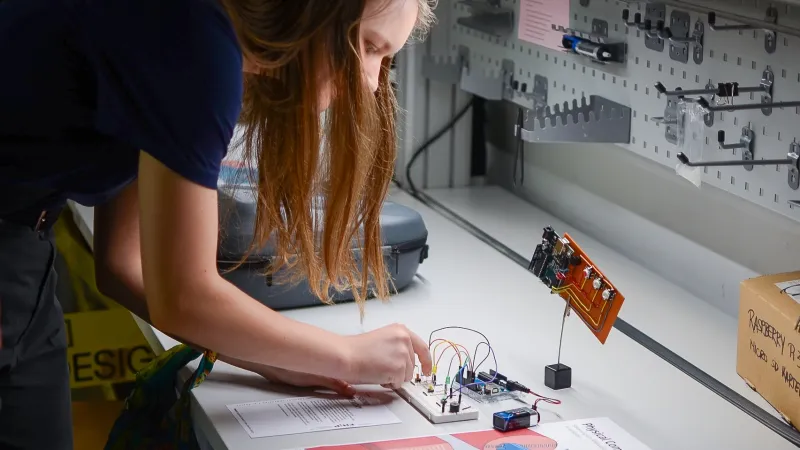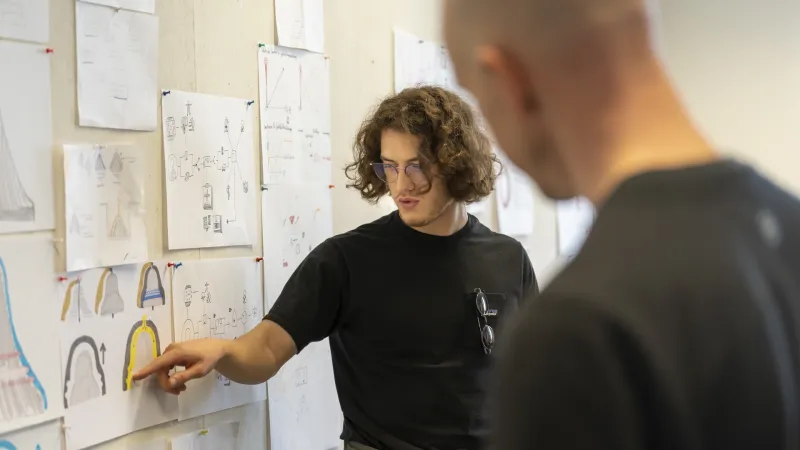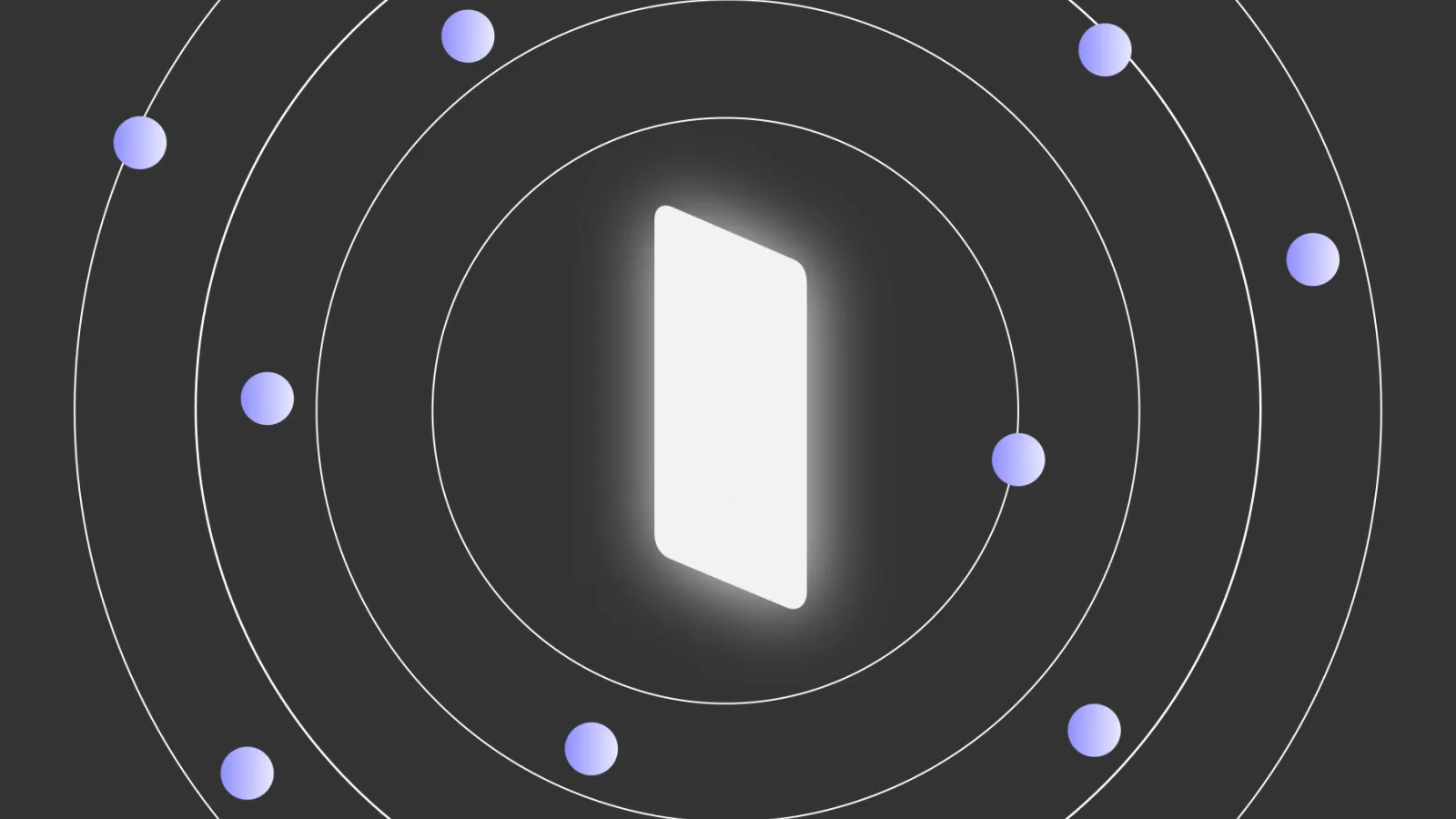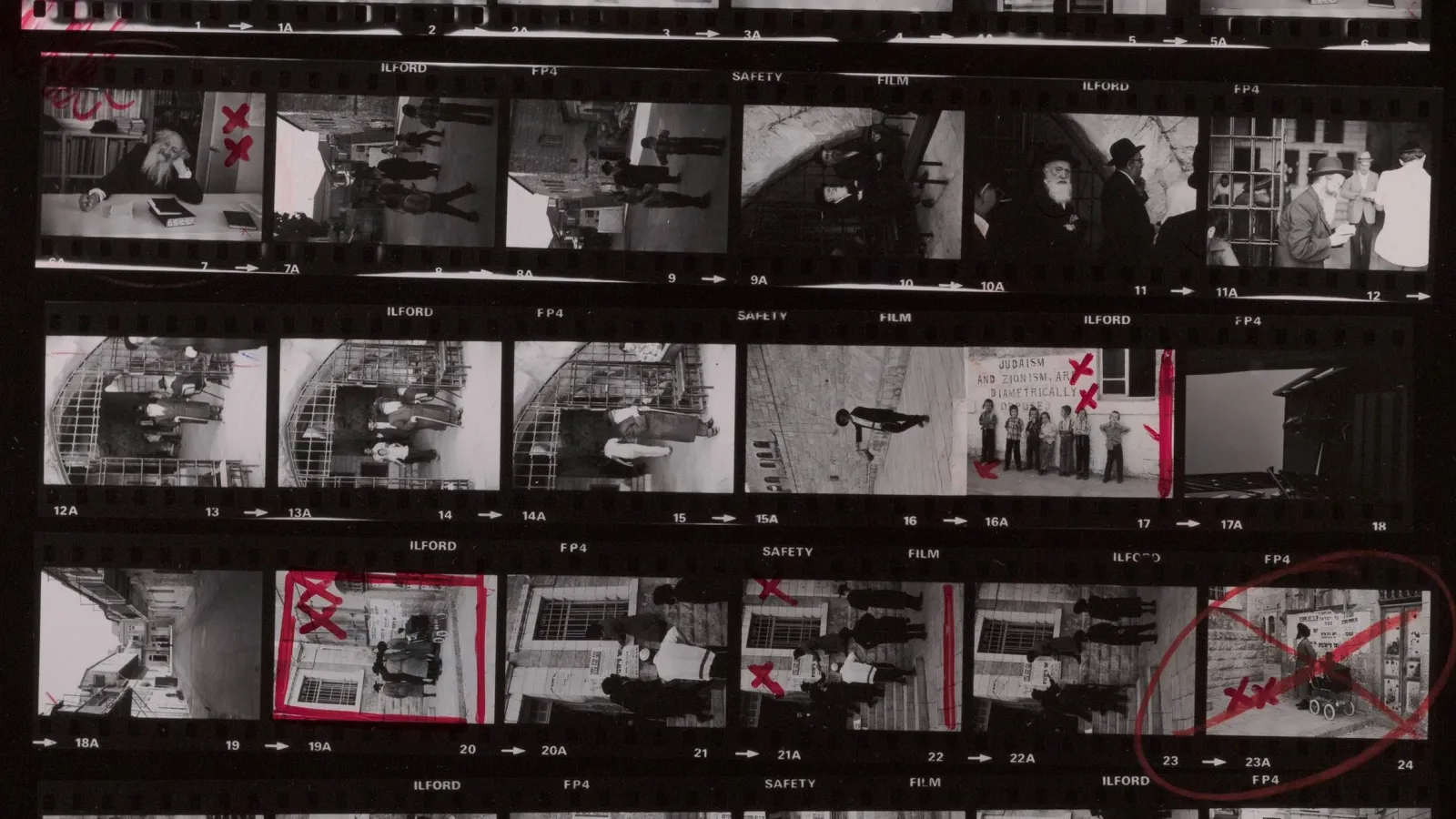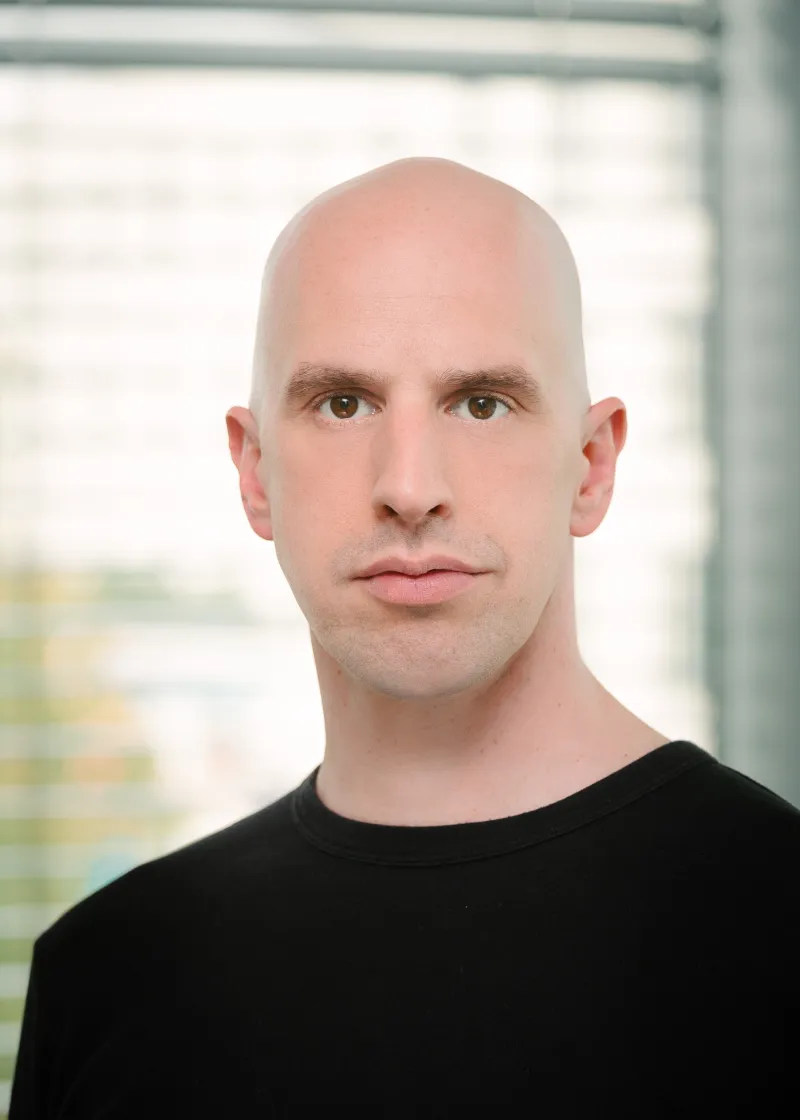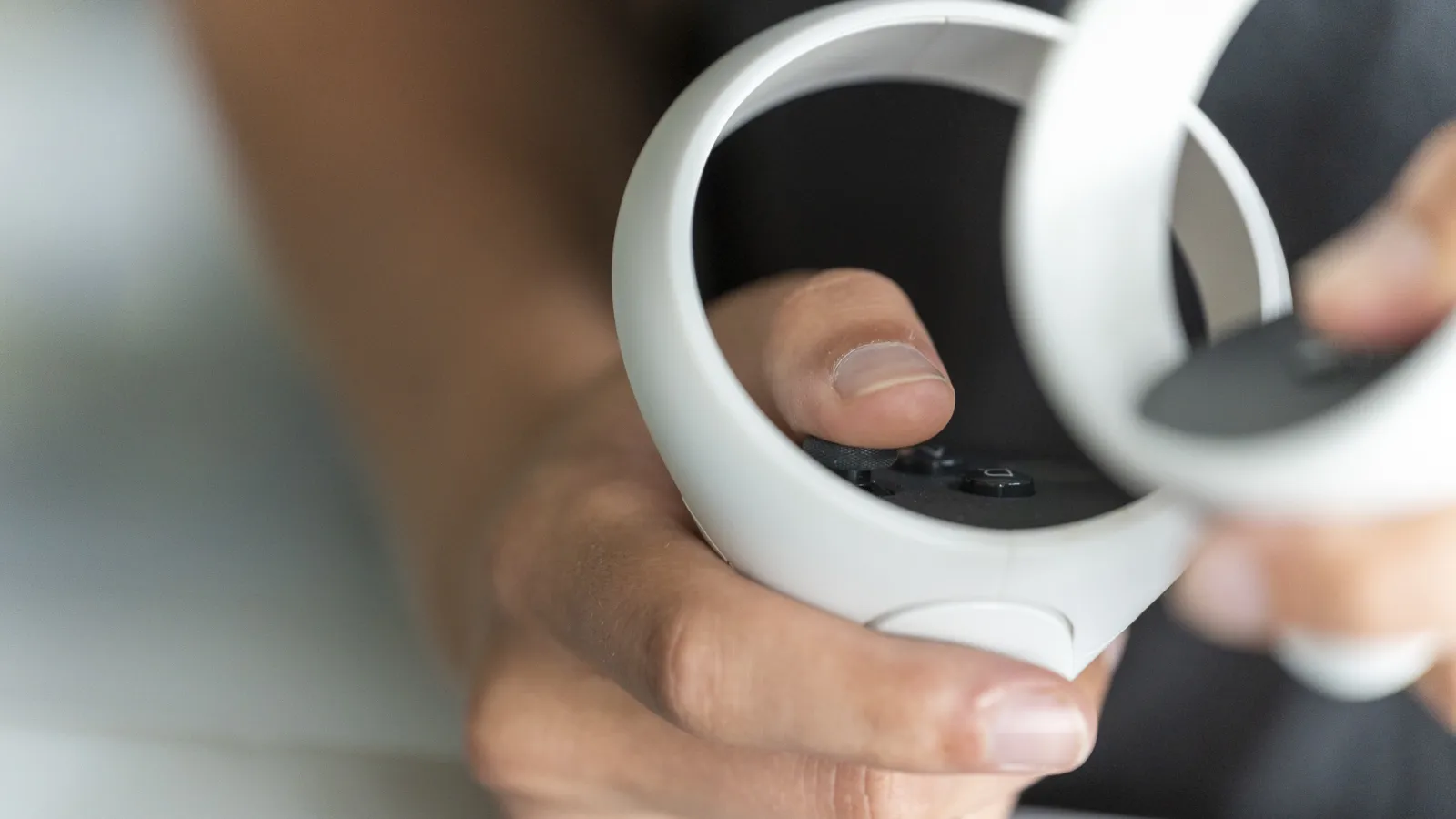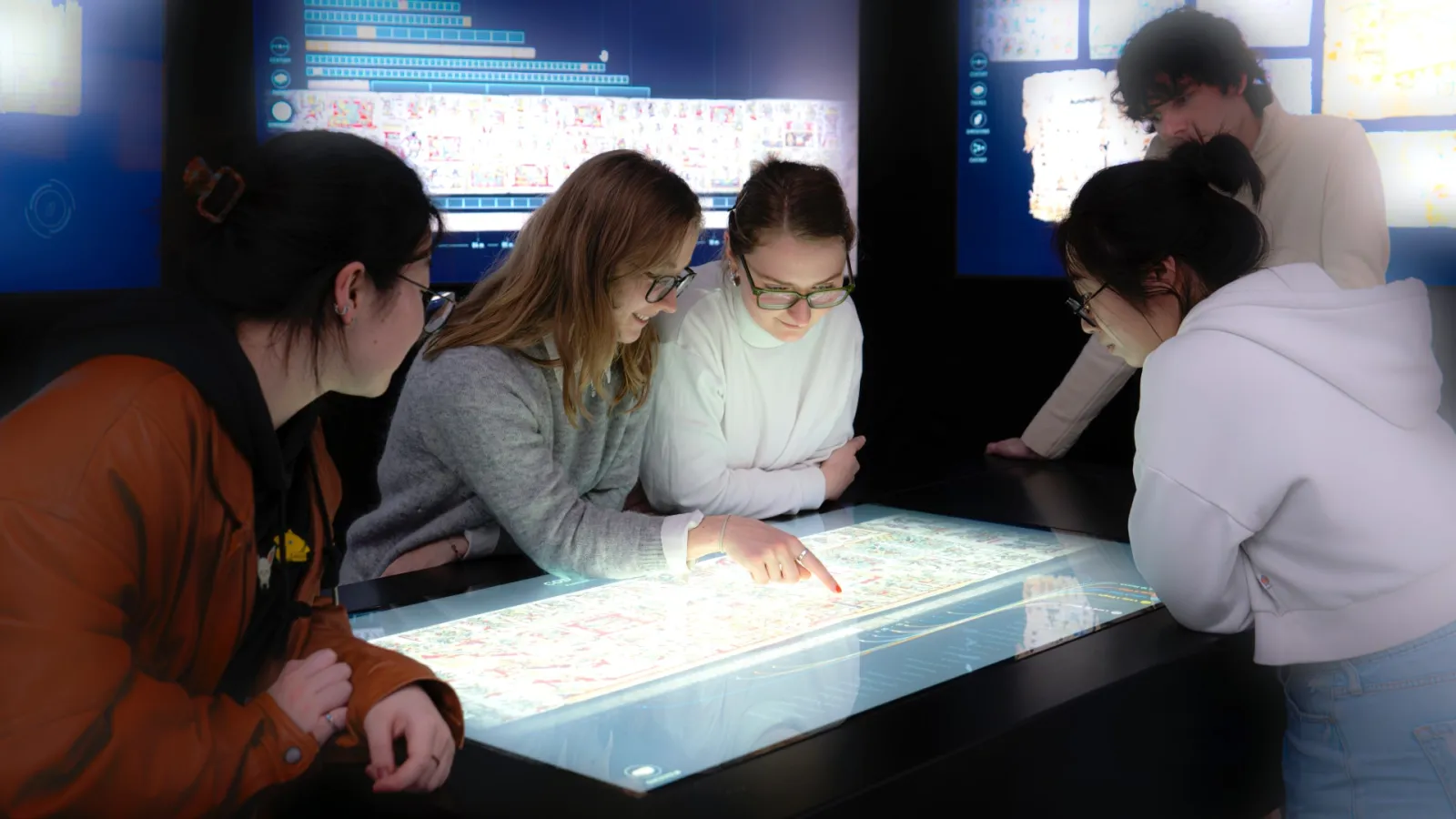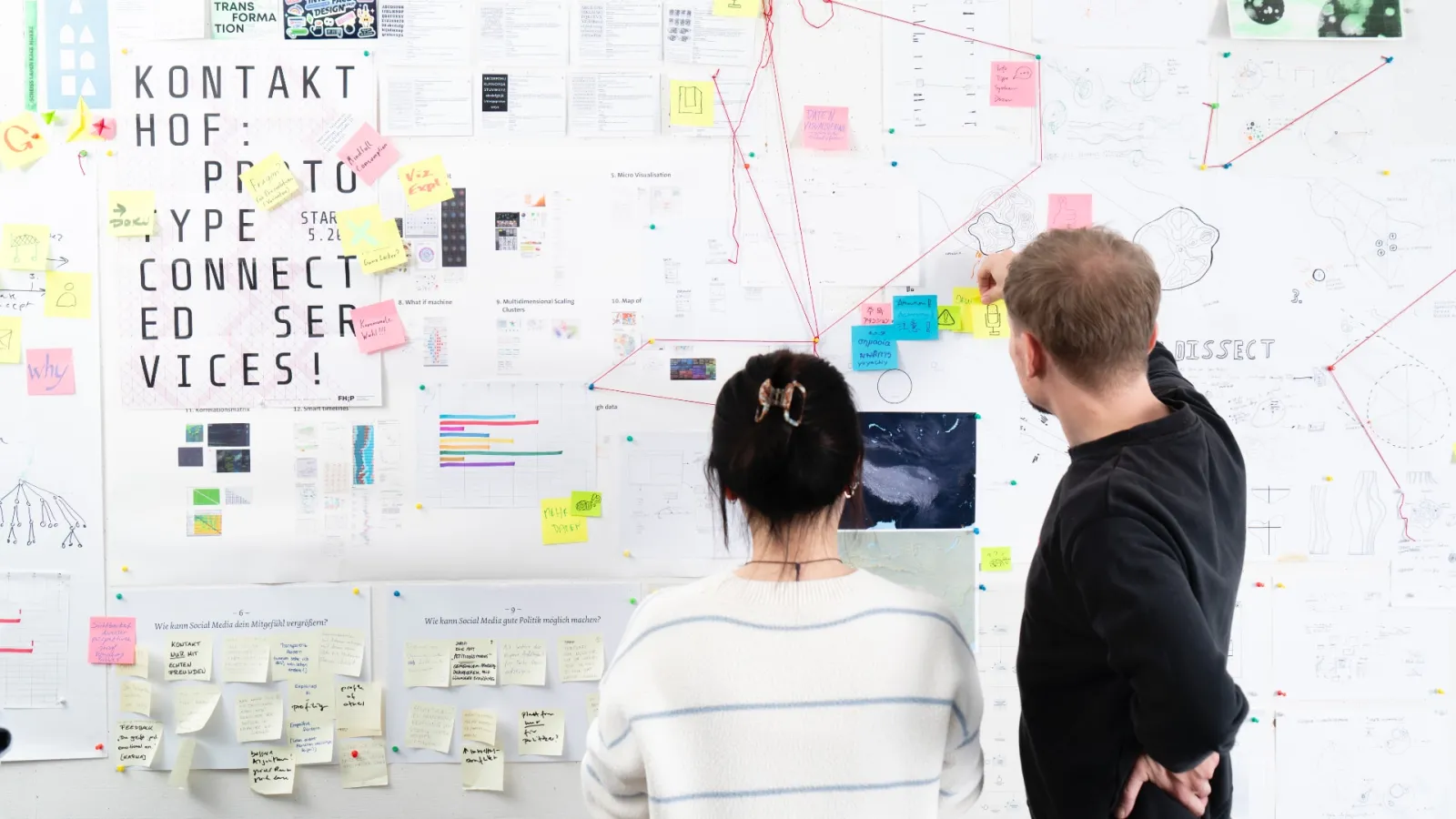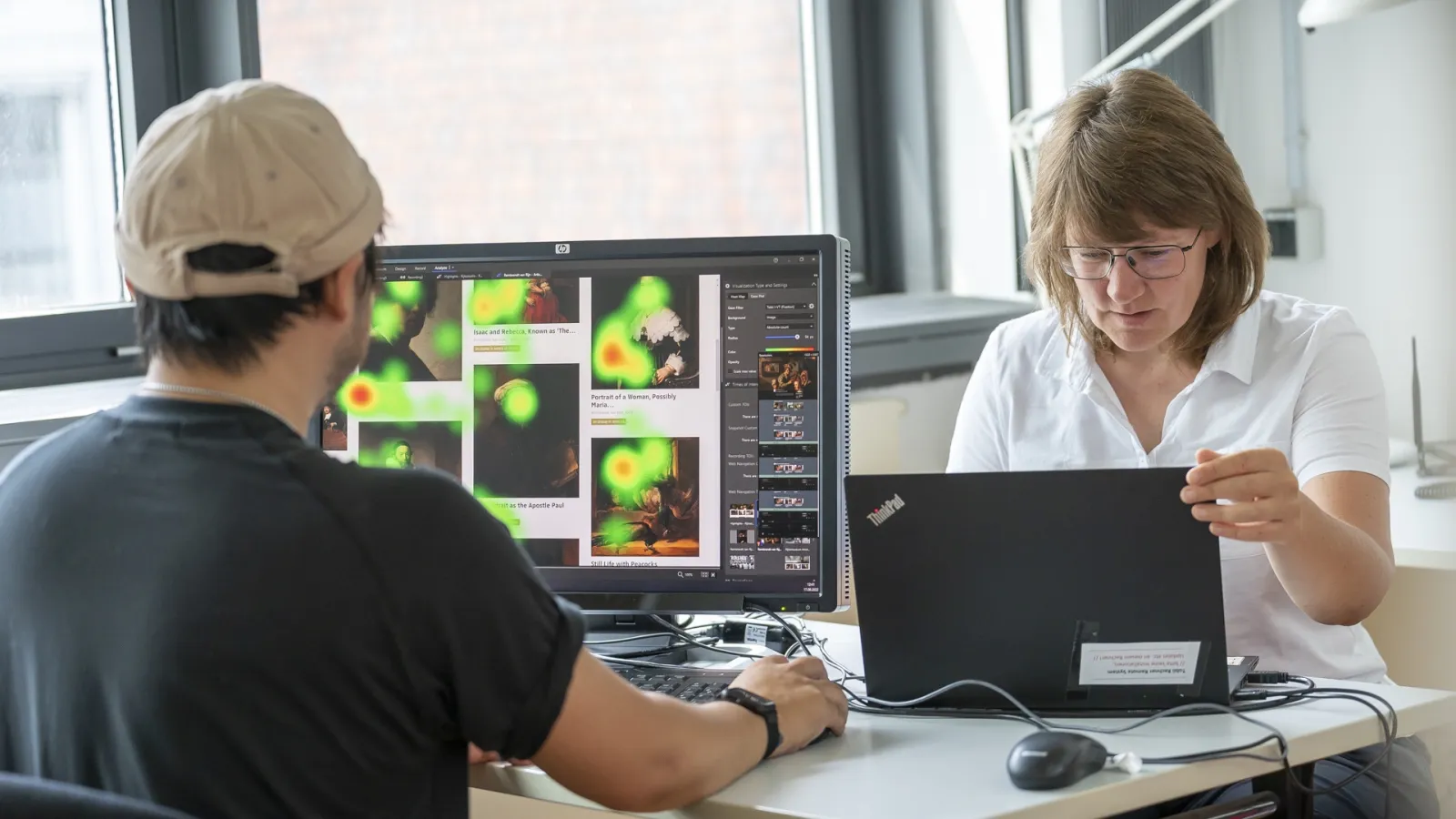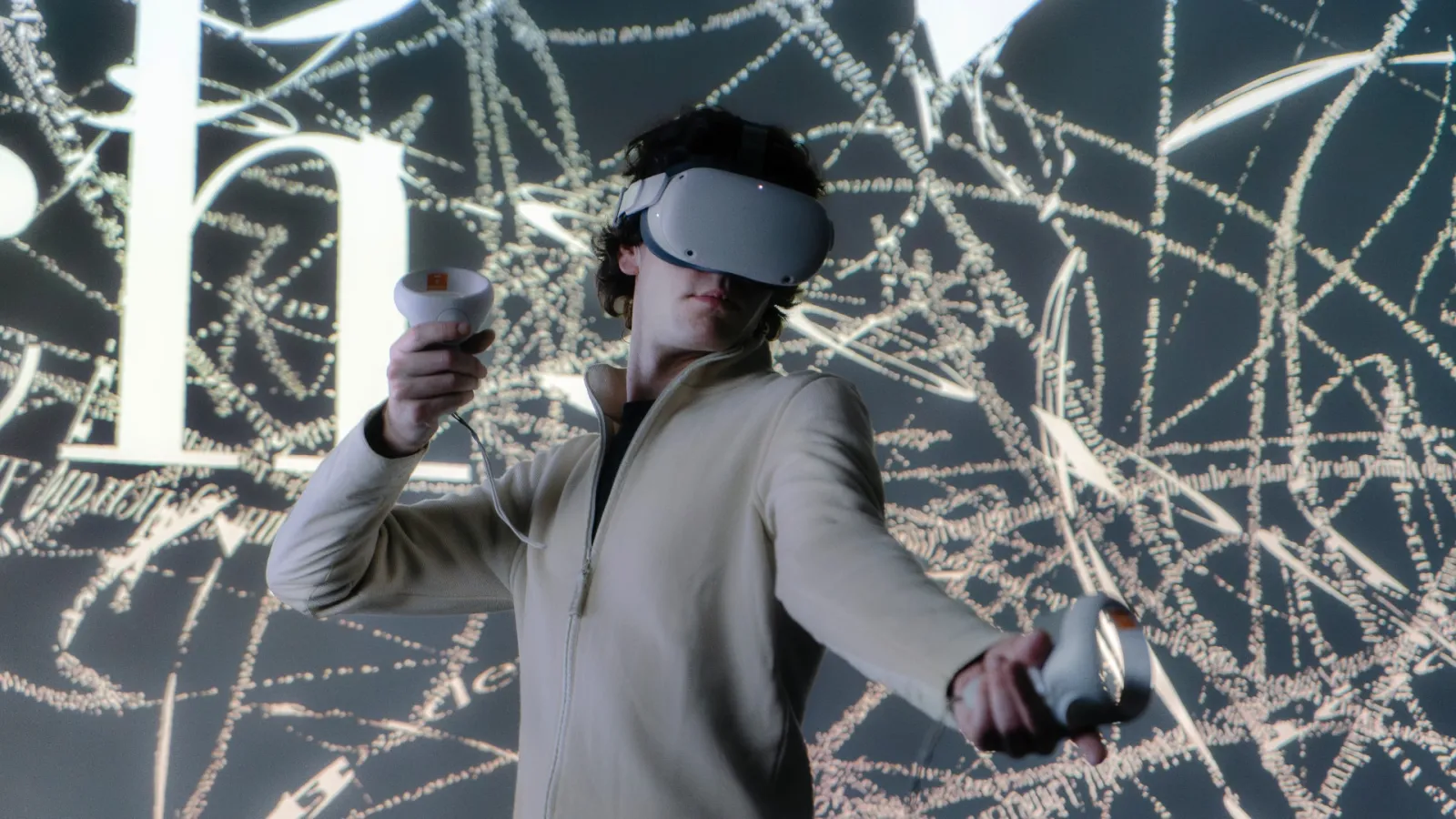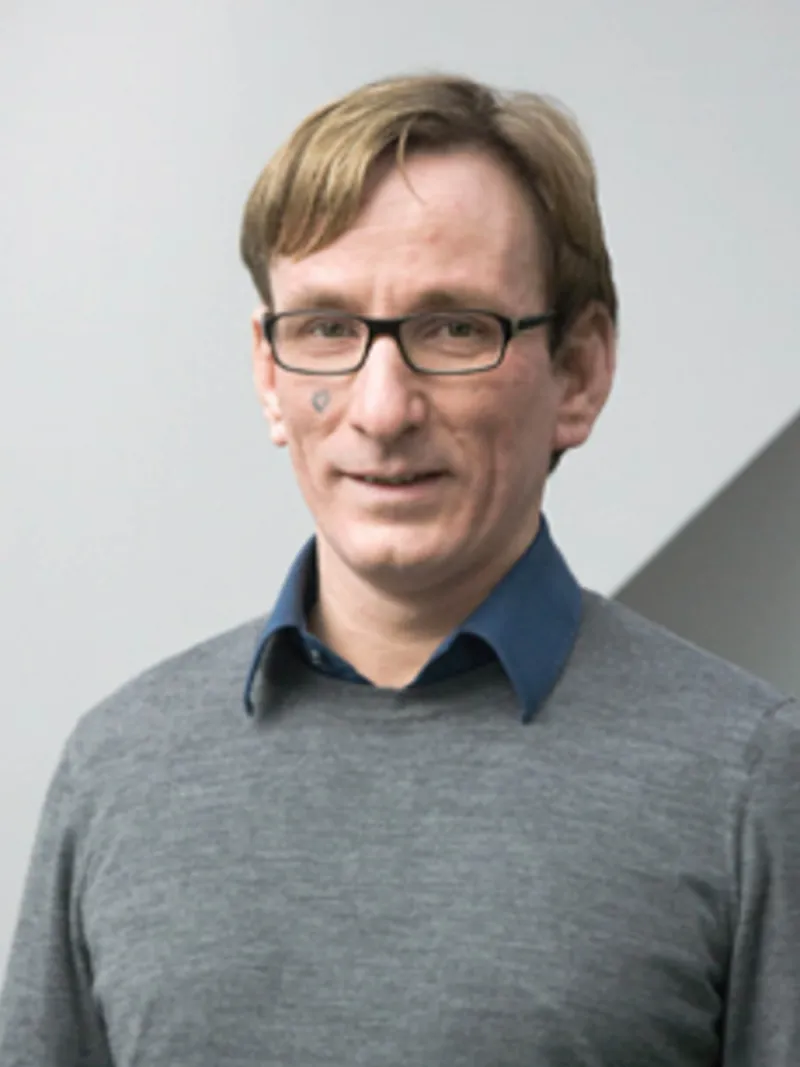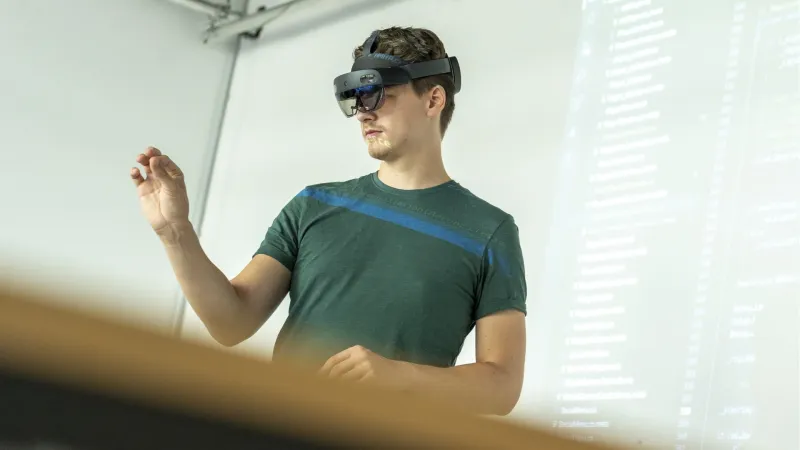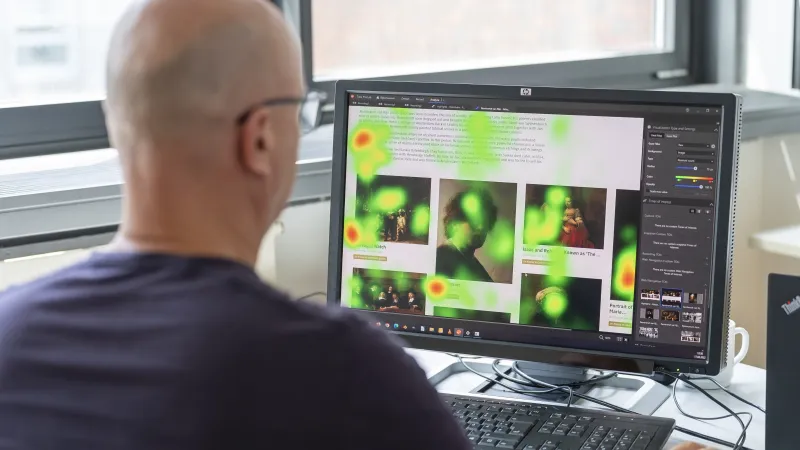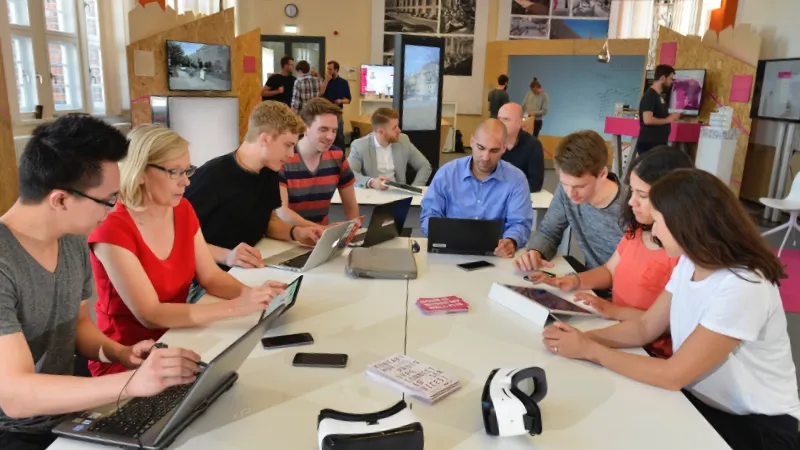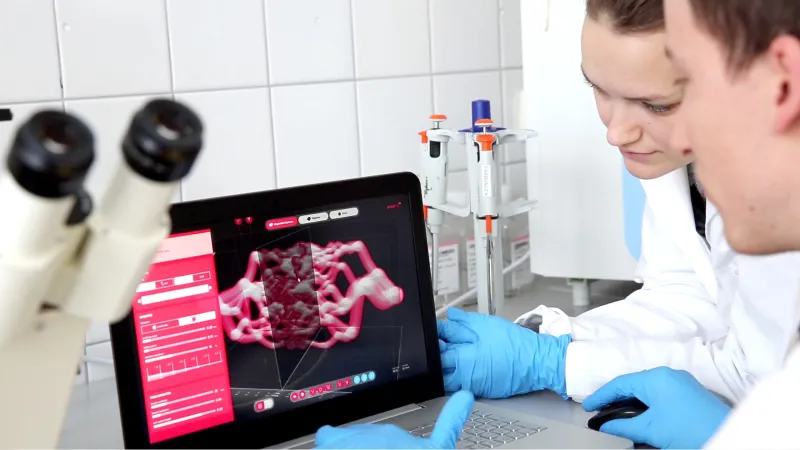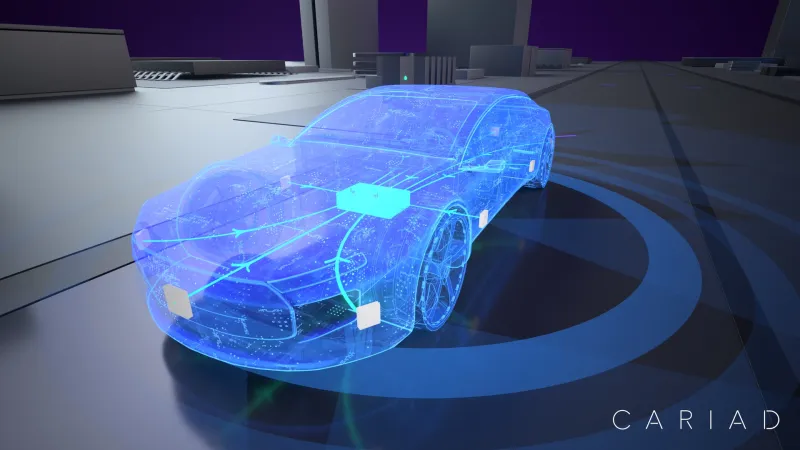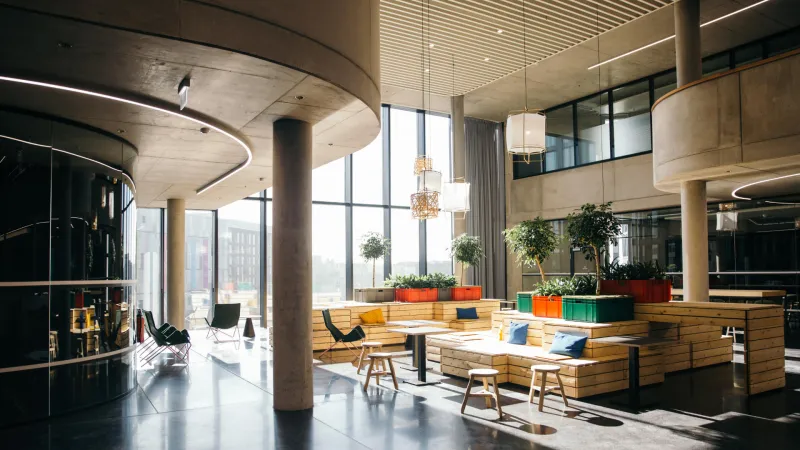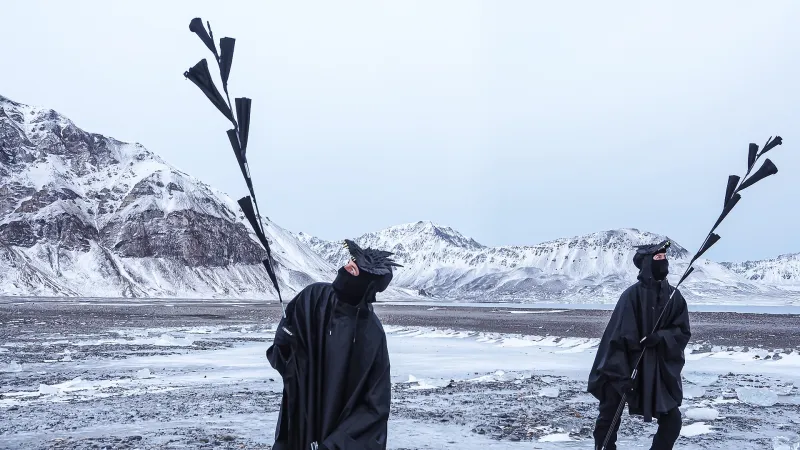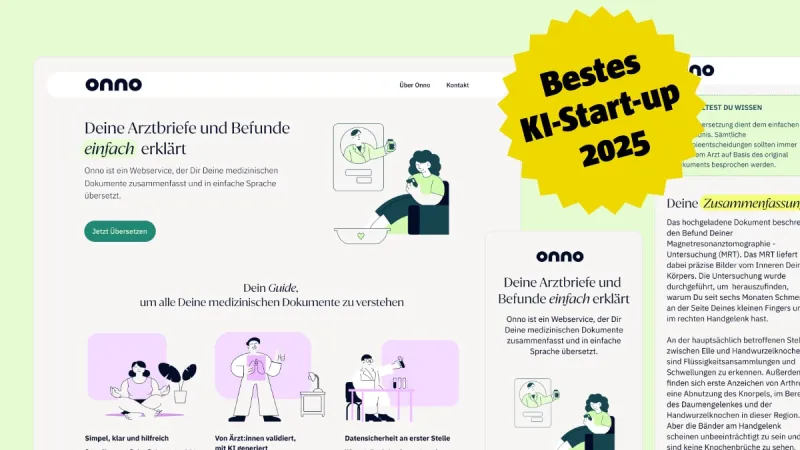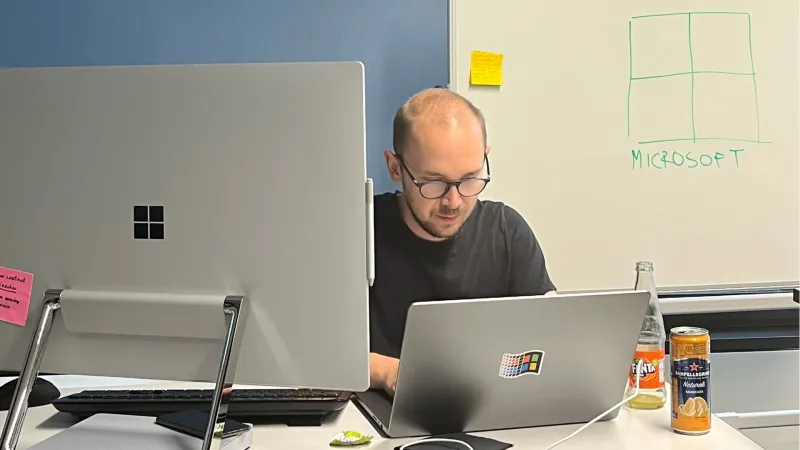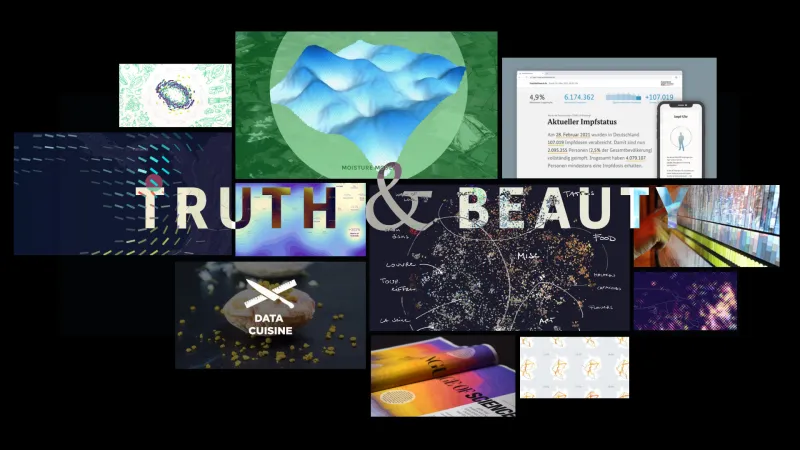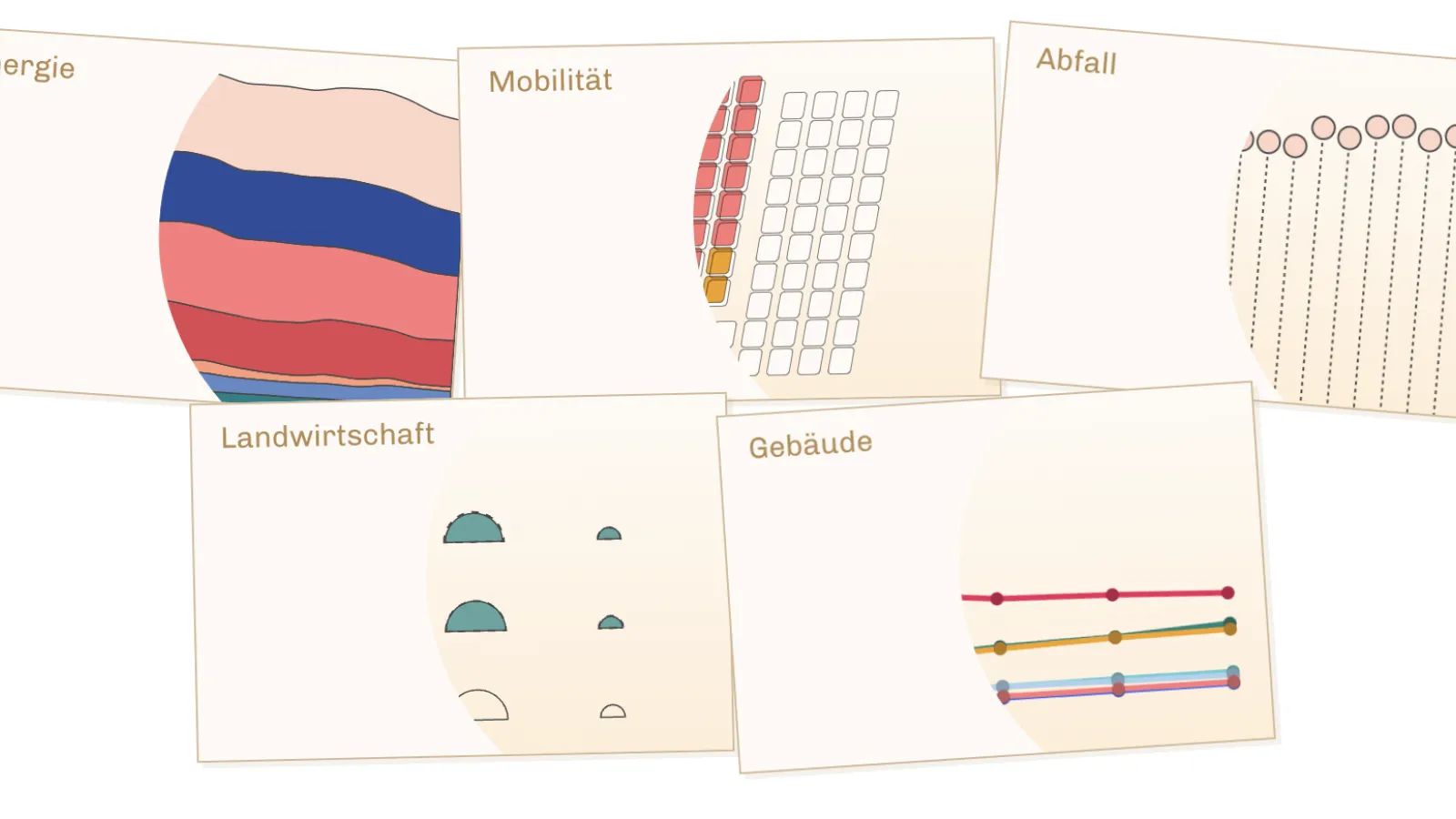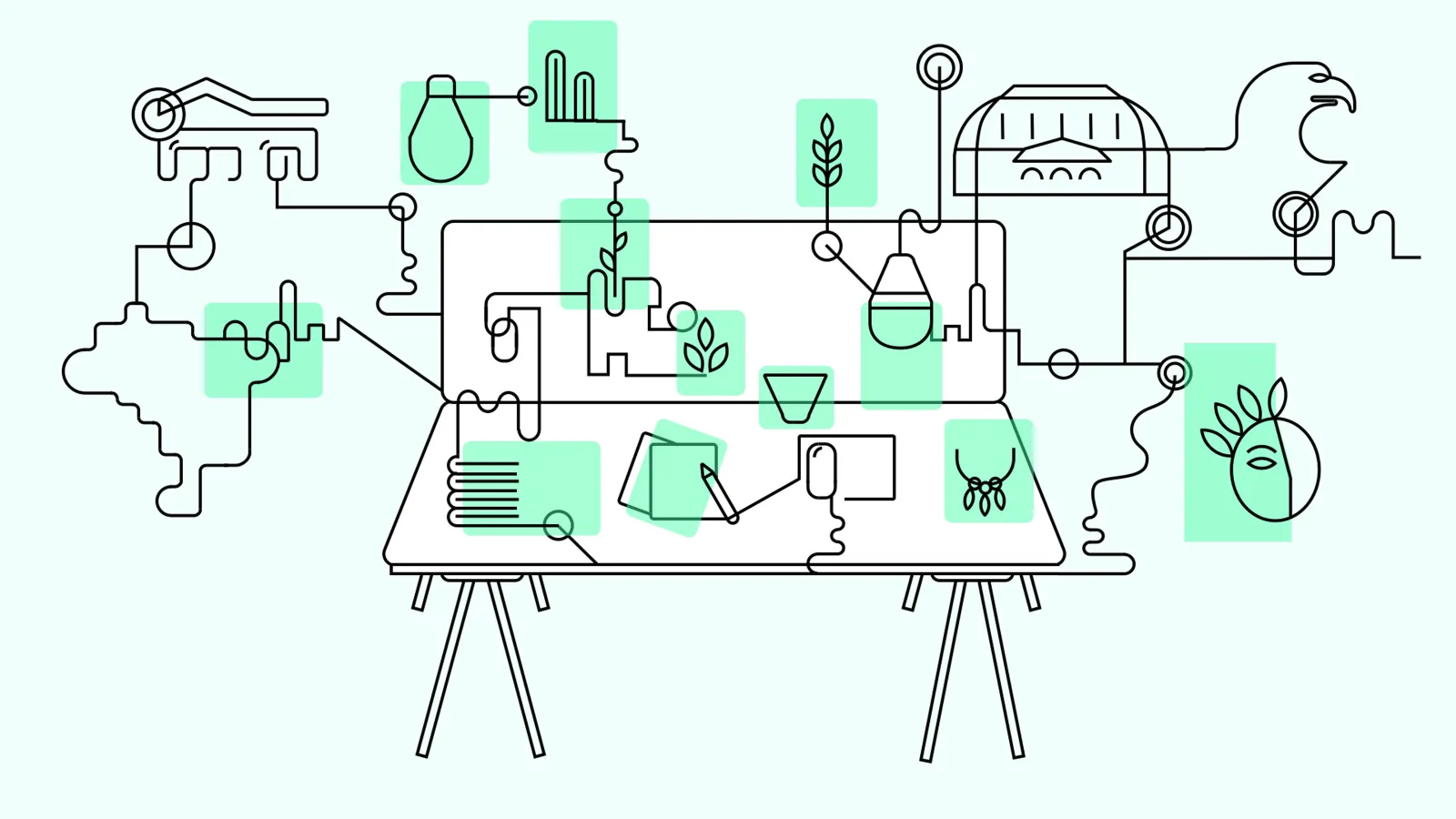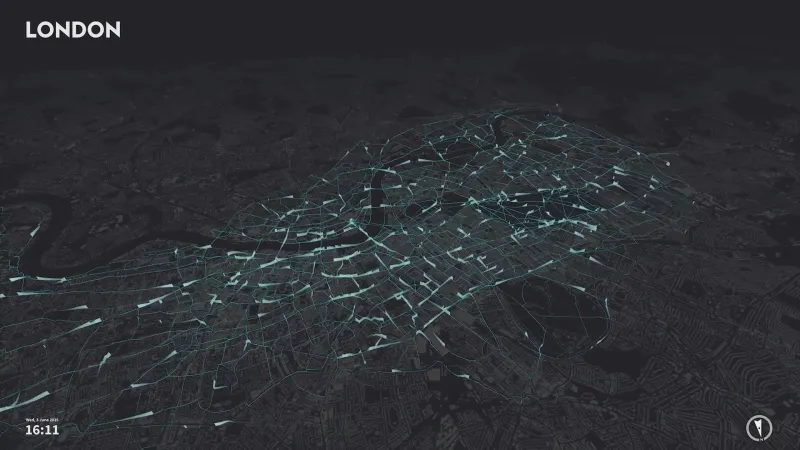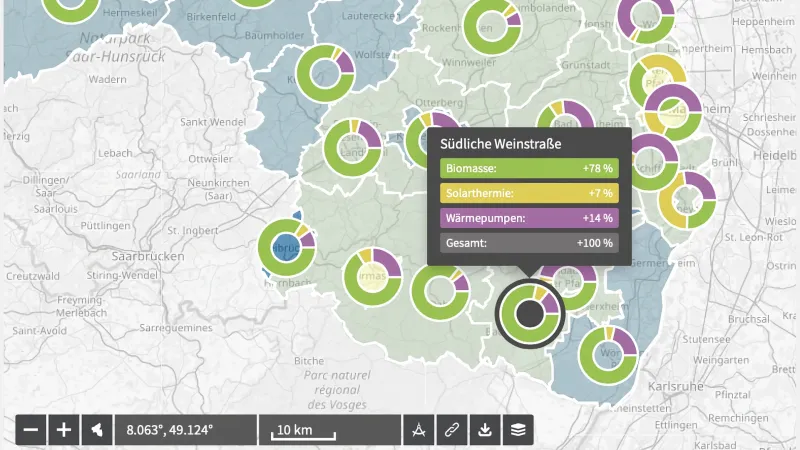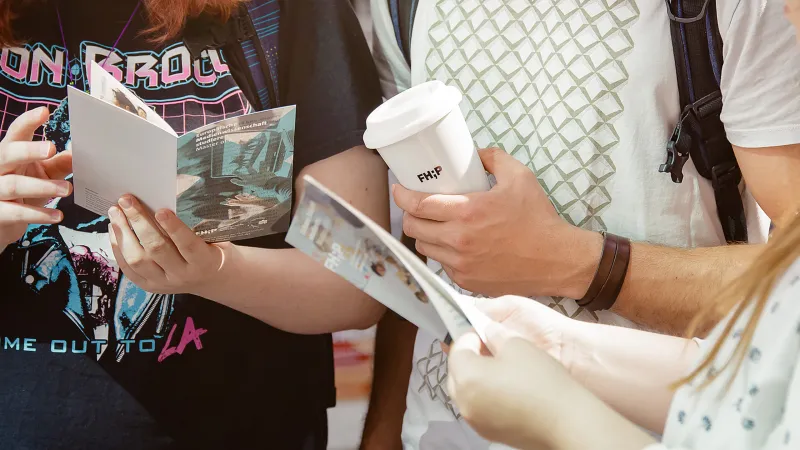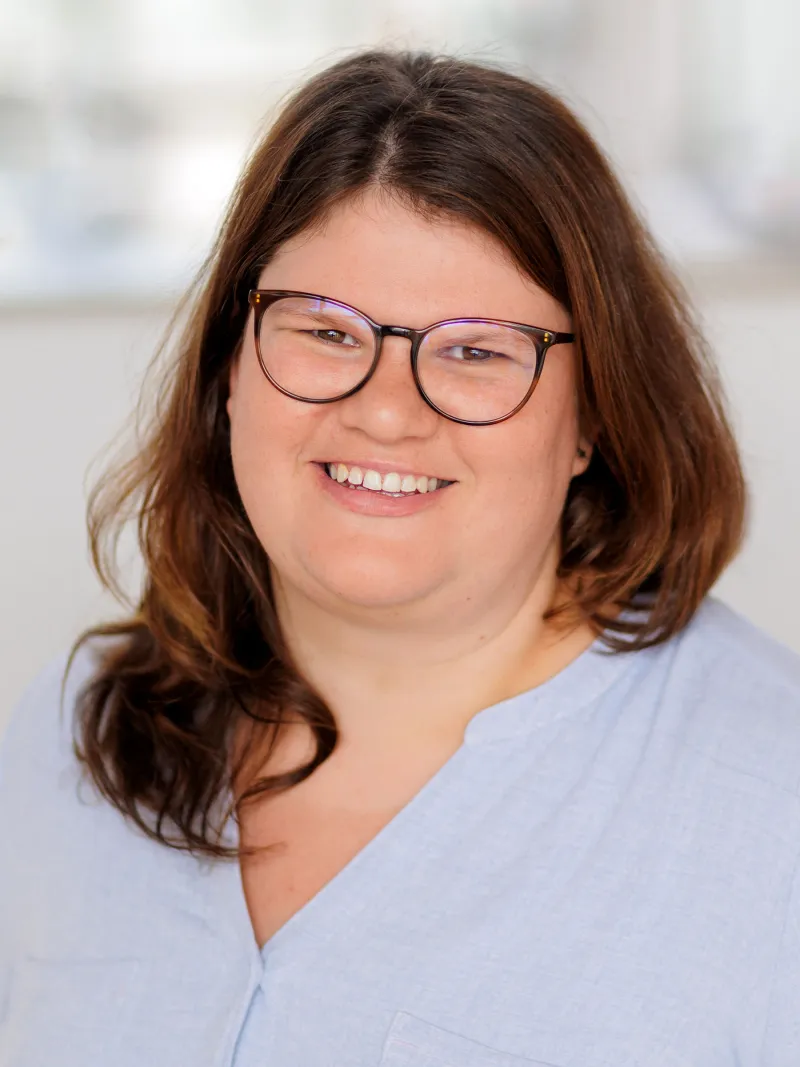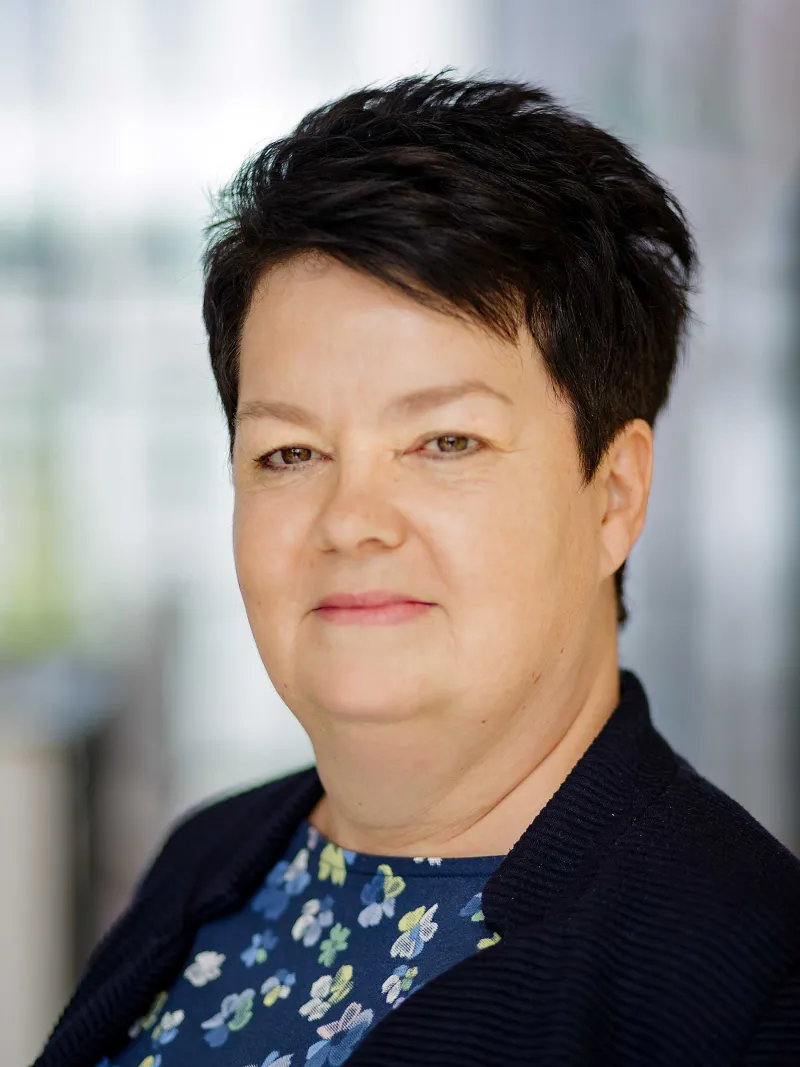This innovative degree combines User Experience (UX) with User Interface Design (UI) and a lot of creativity! Digital devices and systems are only accessible to us through the interface. In the interface, abstract processes become tangible. Interfaces provide us with information and enable us to control processes. What interfaces look like, how they are organised, how they are operated, what information is displayed, what scope for action is offered to the user – all this is decided by interface designers.
8 semesters, incl. one practical semester
15/06 – 15/07 (free of admission)
240 ECTS credits
Profile
Interface design in 200 seconds
What is interface design? And what does an interface designer do? These questions are answered briefly and clearly in the following video. In just 200 seconds, we go from simple interface elements to complex global challenges!
Topics
The Interface Design programme offers a multifaceted education that is dedicated to current and relevant issues of digital transformation in close cooperation with research and practice. The degree programme focuses on subjects that cover both theoretical understanding and practical skills. The following topics are examples of the creative and critical engagement with the challenges and opportunities of digitization as part of the programme at the University of Applied Sciences Potsdam.
Data visualization
When working with large volumes of data, visualization can help us understand these complex issues and make informed decisions. We find data visualizations in more and more areas of life, from data journalism, where interactive storytelling formats explain current developments, to smartwatches that give us insights into our health data through visualizations.
Immersive environments
Augmented, virtual and mixed reality technologies open up an exciting spectrum of new types of experiences-from innovative gaming applications to the augmentation of the physical environment (AR) and complete immersion in digital worlds (VR). For example, immersive applications in the cultural and educational sector can provide playful access to historical, cultural or scientific topics, whether at school or in a museum.
Artificial intelligence
The latest developments in machine learning enable new forms of interaction with computers. Algorithmic processes are increasingly influencing our behavior - such as in recommendation services - or in some cases even making decisions for us. These processes raise complex ethical questions regarding authenticity, discrimination, creativity and copyright. In interface design, artificial intelligence is both a tool and an object of design.
Change of perspective
Major social challenges such as global warming, biodiversity loss and pandemics also affect the actions and impact of designers. New approaches such as eco-social design address these challenges in order to identify possible paths to a collaborative and socio-ecological transformation. Designers are trying to open up new perspectives that also include other living beings and involve more people through participatory methods.
Bridging digital & analog
At the interface between analog and digital media, physical objects and environments can be enhanced by digital technologies. Interactive installations in museums, public places and educational institutions offer hybrid experiences that combine the materiality of the physical world with the flexibility of the digital world.
User experience
When designing new applications and products, we as interface designers consider the entire system as holistically as possible. We involve various stakeholders in the design process in order to achieve results that are not only highly aesthetic, but also user-friendly and barrier-free. This integrated and inclusive approach results in innovative systems that also take fun and enjoyment into account.
Concept
Interface design is one of the most important design disciplines of our time. Digital technologies are present in all areas of our lives. This ubiquity makes it clear that good design is essential for a meaningful, positive and responsible use of digital technology.
When we listen to music or send messages on a smartphone, write texts or play games on a PC, book tickets on the web or view virtual exhibitions: digital technology can only be experienced concretely through the interface. Interfaces provide us with information and enable us to control processes. How interfaces look, how they are organised, how they are operated, what information is displayed, what scope for action is offered to the user – all this is decided by interface designers.
Within the framework of the creative, independent study programme, interface design teaches both design and methodological skills. The degree programme is highly qualifying for a profession, but also provides a lot of room for experiments and research approaches. Current technological developments such as AI (artificial intelligence) and machine learning, robotics as well as virtual and augmented reality are taught both pragmatically and experimentally. The lecturers of the degree programme support you in developing a curious, creative and critical approach to digital technologies.
Our study concept is based on the following overarching principles:
Creativity
At the centre of every design degree is the training and development of one's own creativity. Creativity here means both finding one's own language of form and developing problem-solving skills. In almost all design projects, both aspects must be considered equally. A beautiful interface does not solve a problem – a good structure that is poorly presented is incomprehensible. In studies and in the profession, creativity means finding innovative and sustainable solutions to problems and designing elegant interfaces.
Accordingly, creativity is also taught, trained and practised in the interface studies at the University of Applied Sciences Potsdam. Even in the basic studies, creativity techniques are taught, aesthetic experiments are carried out and work is done on complex problems. In creative processes, there is no one right way. Rather, our goal is to teach you strategies with which you can independently work on complex problems both aesthetically and conceptually.
Design and methodological competence
By teaching design and methodological skills, you will be able to work through two seemingly simple questions: How do I design? And what do I design?
For the development of design skills, we offer courses in which topics such as screen design, typography, generative design, web design and data visualisation are taught in practical exercises. Here students learn how to design and how to justify their design decisions.
But interface design goes far beyond interfaces. In order to design elegant and comprehensible digital systems, one must also ask what is actually to be designed. As designers, we don't have to take structures and systems for granted – we can question all processes and contexts. To this end, we teach topics such as information architecture, user experience design (UX), usability, service design, digital business models and evaluation techniques.
Personal responsibility
The design degree programme in Potsdam is characterised by a high degree of personal responsibility. We want to enable our students to set their own focal points and to deepen their knowledge in topics and specialist areas. It is not without reason that we encourage students to set their own focal points outside of interface design through our study regulations. However, personal responsibility also means taking responsibility in design processes, developing one's own power of judgement and taking up positions.
Selected Thesis Projects

Path/waves

Demokratie gestalten

Data-driven creativity: A handbook for using data as information or inspiration to create dynamic visual identities

macOS With Collaboration in Mind — People Are the New Primitive

AFAIR – Alltägliche Erinnerungen aus Chatverläufen

Artificial Impasto

Intersectional Feminist Data Visualization Archive – Exploratory online collection of feminist, anti-racist, decolonial, queer, critical, and/or ethical data visualization research and practices

Designing a Customizable Period Tracker With a Human-Centered Approach and Data Visualization to Support Menopausal Transition
Frequently asked questions about the interface design degree programme
→
Do you have to know how to programme to study interface design?
No.
Do you have to learn programming on the interface course?
No - but we offer a range of courses that give a design and creative approach to programming techniques.
Is interface design comparable to computer science?
Both computer science and interface design deal with digital technology – but from very different perspectives. Put simply, computer scientists are interested in how digital technology works. Interface designers are interested in what can be done, designed and achieved with it. Interface design is not about technology per se, but about the relationship between people and digital technology.
Is UX the same as interface design?
UX ("User Experience Design") is a term that is now often used when talking about the development and design of digital products and services. From our point of view, UX emphasises methodical aspects of interface design. UX is therefore about a structured and user-centred approach to the development and evaluation of interfaces. In UX, the needs of users are carefully ascertained, prototypes or products are tested, usage is analysed and conclusions are drawn for improvements. UX is an important design strategy that is taught in the interface design course. But it is not the only one. Research, creative approaches, experimental work and free speculation about interfaces are just as much a part of the training and professional practice as methodical analyses.
Do you design more than just apps in interface design?
Yes! Interface design is very versatile. From very methodical user experience design, which examines very precisely how technology is used, to the very artistic design of interactive exhibition formats, a lot is possible and is also offered in teaching. It's worth taking a look at the course catalogue, Incom and our showcase page.
If I get a place to study interface design, can I only take interface courses?
No. In the first semesters of the bachelor's programme, we offer a comprehensive and cross-curricular programme in elementary design – in other words, in the basic courses for design students. But in the further course of studies you can – and should – also take courses from communication design, product design and european media studies. In the design modules, you can take up to 50 % of the achievements in the other two design courses!
Is interface design an artistic degree?
Good question. Artistic study: yes. Art studies: no. One of the special features of the design programme in Potsdam is that students can choose their own focus. You can study very applied - but also very free and very artistic.
→
I can't draw or paint at all – but I'm very interested in interface design! Is that possible at all? If so – how do I get a portfolio?
Drawing is a good way to put ideas on paper – but not the only way. You don't have to be able to draw perfectly to study interface design. If you don't have a portfolio, take some time and set yourself creative tasks: Think of an app you would like yourself and sketch it. Use photography to document people, things and interactions. Experiment with graphics software. Play with computer code. Create personal maps. Discover programme sequences in everyday life and describe them. Create a cookbook without words. Translate a piece of music into a picture. Shoot a video.
I draw and paint a lot. But what should I put in my portfolio when I apply for the interface design course?
We are interested in the creative side of your personality. The portfolio is a way of presenting this side to us. In this respect, the portfolio can include drawings, sketches, photographs, paintings, renderings, models, web designs, but also films, animations, music pieces, sculptures, installations or other creative formats such as computer code, stories, websites, games, videos and music. Just show who you are, what interests them and how they communicate their ideas.
How should I work on the task for the entrance exam?
As creatively as possible. Avoid clichés, convince us of your concept! The formal elaboration is not unimportant – but we are mainly interested in your ideas.
What skills should you bring with you when applying for interface design?
Curiosity, solution-oriented thinking, a good general education, a desire to design, enjoyment of complex problems, interest in digital technology.
Can you earn any money at all with interface design?
Yes – and possibly quite a lot. The degree programme has very good industry contacts. Our graduates work in large companies, have founded very successful start-ups or work as independent experts.
Can you also work in research in the future?
Yes, the Interfacedesign programme is very involved in research. With the Interaction Design Lab and the Urban Complexity Lab, we have two outstanding research units with an international reputation. Furthermore, through a cooperation with the University of Potsdam, it is possible to do a doctorate with us on topics related to interface design.
Projects
More projectsMyAppMyData
App prototyping as an inclusive teaching-learning arrangement for the integrative development of digital skills at upper secondary level.
International Study and Training Partnership with the National Taipei University of Technology (Taiwan)
Exchange programme for students and teachers within the framework of the DAAD ISAP programme
Fear of change – transformation prototypes
Participatory design as a means of participation and understanding to counteract social division.
GraDiM: Granularities of Dispersion and Materiality – Visualising a Photo Archive on Diaspora
In collaboration with photographer Frédéric Brenner and his international project team, the GraDiM research project is developing theoretical and technical concepts for the visualisation of a photo archive with particular sensitivity for a collection documenting the Jewish diaspora.

Partner universities
The Interfacedesign programme has particularly good relations with the University of Malmö (Sweden), the University of Edinburgh (UK), the Accademia di Belle Arti di Frosinone (Italy), the Shenkar College of Engineering and Design (Israel). Outside Europe, we maintain a very close exchange with the National Taipei University of Technology (Taiwan). Through a funding programme of the German Academic Exchange Service (DAAD), up to three full scholarships are available per semester for a five-month stay abroad at the partner university in Taiwan.
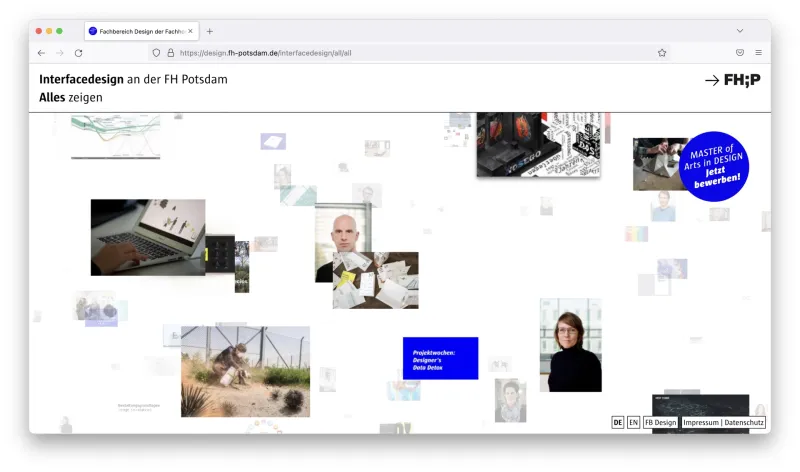
Showcase
Let yourself be inspired! The showcase of the design department offers a visual, interactive and playful insight into study programmes, workshops, people and projects! A fluid and dynamic interface gives you a quick and entertaining impression of the activities in the department.
Contact
The colleagues at the student counselling service provide information to prospective students, first-year students, parents, teachers and students on all general questions about studying. If you have specific questions or concerns about the bachelor's degree programme in interface design, please contact the subject counselling service.
Subject Counselling Service
Other degree programmes in the design department
More courses| Department | Degree programme | Teaching language | Start of study | Application deadline |
|---|---|---|---|---|
| |
Communication Design (BA) | German | Winter semester | 15/05 – 15/07 (restricted admission) |
| |
Design (MA) | German, English | Winter semester | 15/05 – 15/07 (admission restricted) Registration for the qualifying examination:
until 01/04 |
| |
European Media Studies (BA) | German | Winter semester | until 15/07 at the University of Potsdam (admission restricted) |
| |
European Media Studies (MA) | German | Winter semester | until 01/06 at the University of Potsdam |
| |
Interface Design (BA) | German | Winter semester | 15/06 – 15/07 (free of admission) |
| |
Product Design (BA) | German | Winter semester | 15/06 – 15/07 (free of admission) |
Study Structure
Course of studies
The bachelor of arts degree programme in interface design is a full-time programme lasting eight semesters. At the centre of the study programme are:
- Common, generalist basic training
- Individual, interdisciplinary course selection
- Integrated lectures and exercises
- Technical and craft practice in the workshops and laboratories
- Interdisciplinary project work and with practical partners
- Supervised student projects and exercises
Find out more about the concept, design principles & theory of our design degree programmes here.
In the module handbooks, study and examination regulations and statutes of the design department (valid until summer semester 2025), you will find the module overview, a detailed description of the modules and study contents, the study plan and the statutes for determining the course-related aptitude for the study course in interface design. New study and examination regulations will apply from winter semester 2025/26. They will be published shortly.
Course of study and modules
In the first semesters, design basics, sound technical skills and theoretical principles are taught, project experience is gained and professional orientation is provided. The design and workshop modules provide basic training tailored to the course. The courses of all three degree programs Interface, Communication and Product Design are taught across all degree programs. The course demands and promotes individual focus areas through a distinctive system of electives.
The "Reflection" module is at the center of the course. In a discussion with lecturers, you present your career to date, draw up a summary and plan your further studies.
The following semesters are strongly characterized by design work in predominantly project-oriented tasks. Here you can set your own focus. You have the opportunity to specialize and deepen certain topics or skills. Or you can opt for a broad-based course of study and take part in many different courses in different areas or other design courses. Our compulsory elective principle makes both options possible for you.
An entire semester is reserved for the internship. Here you can gain practical experience in agencies, companies or in research.
The Bachelor's thesis, which is completed during the eighth semester, concludes your studies.
(The module structure was adapted as part of the reaccreditation process and will apply from winter semester 2025/26 - SPO2025).
Exemplary study programme
The teaching concept of the Department of Design offers students a highly individualised course of study. Each semester, students have the opportunity to freely choose their courses (according to the module plan). They have the opportunity to set their own priorities in their choice of subjects and courses and thus individually develop and deepen their own inclinations and competences. We present a possible course of study here for your orientation. However, your individual path through the degree programme can and should deviate from this plan!
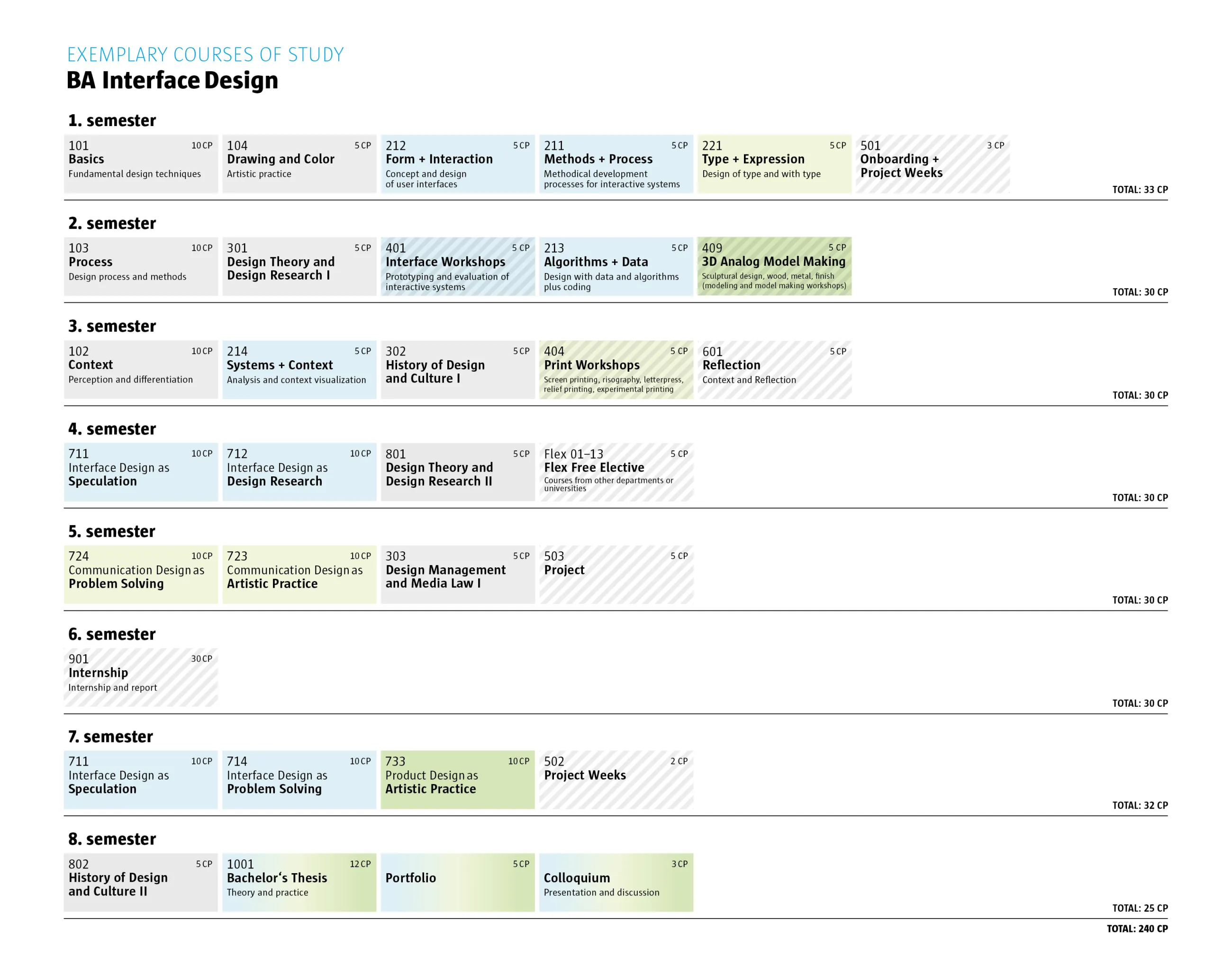
Teachers in the course of study interface design
Workshops & Laboratories
Interface Workshop
The interface workshop bundles different prototyping technologies. A current focus is on virtual reality (VR) and augmented reality (AR). Furthermore, spatial interaction concepts can be developed in the workshop and implemented with the help of current physical computing technologies such as Arduino, Fritzing or Raspberry Pi. Furthermore, interested parties can use various stationary and mobile multi-touch systems for their projects.
UX – User Experience Lab
The UX – User Experience Lab of the design department provides students, staff and external companies and institutions with a wide range of technical options for the use of all common usability testing methods. Extensive user studies in the form of usability tests as well as acceptance and impact studies can be carried out with and without eye tracking. The modern equipment allows the testing of interactive products and services in all phases of the research and development process.
Career Prospects
Career prospects
Interface designers have a clear job description: they are experts in the design of digital products. Topics such as user-friendliness play just as important a role as aesthetics and social and ecological responsibility. Interface designers work in a wide variety of industries. Even during their studies, students can benefit from the large network at the University of Applied Sciences Potsdam and realise their first projects in cooperation with companies, institutions and partner universities.
Prospects in business and industry
Interface designers can fulfil various tasks and work in development processes as planners, developers or strategists - whether in permanent employment or on a self-employed basis. Experienced interface designers usually act in management positions and take on project planning and supervision as well as consulting. Typical employers in the field of interface design are:
- Design agencies
- Communication agencies
- IT companies
- Industry, e.g. games industry
Perspectives in science and research
In the field of research, the demand for interface designers is constantly increasing. The range of tasks includes the development of interfaces for new applications as well as actual research, such as brain-computing interfaces, where interfaces are controlled with thoughts. Graduates find jobs in, among others:
- Institutes
- Research laboratories
- Universities
Master's programme
Graduates of the bachelor's degree programme in Interface Design can expand their knowledge and acquire specialist skills in a further degree programme. The focus of the master's degree programme in design is on science and research. In this degree programme, you will deal in detail with specific research questions and work on research projects. You can then pursue the path to a doctorate.
Voices of our graduates
Elisabeth Eichhorn – UX Architect at CARIAD SE
»The detailed examination of the various aspects of interaction and information was particularly important for me during my studies. In the process, I learned numerous methods that I still use in my professional practice today. I was also enthusiastic about the spirit of optimism that prevailed during my studies! In particular, the topics of 'physical computing' and design research have inspired and shaped me in the long term. Even back then, my studies encouraged me to realise that interface design means more than just designing screens.«
Timm Kekeritz – Vice President of Product Design at Zalando
»What I really liked about my studies was that I had to present and discuss my own work almost every week. The question of 'why this way and not another' became an essential part of my creative process and helps me every day to link design with our economic goals. In addition, my professors supported me very well in finding a position for the internship semester with contacts and letters of recommendation. Without their commitment and encouragement, I would never have dared to take the step to the USA.«
Katja Budinger – Senior Service Designer + Futurist at Accenture Song
»Besides the inspiring people I met here, I particularly liked the interdisciplinary and collaborative approach of the programme. In retrospect, I would have liked to try out more, use the workshops more often and get a taste of other subject areas. My experimental master's thesis opened many doors for me, as 2017 was just the right moment for 'foresight' and speculative design approaches. In the meantime, I incorporate 'futures thinking' and speculative design approaches into our daily work at Accenture Song and am constantly developing my methodological toolbox.«
Julia Kontor – Infographic Designer at Wigwam
»What was particularly inspiring about the degree programme was the versatility, the critical teaching and the opportunity to realise very individual projects. Exciting topics and projects anchored in the ravages of time were always dealt with in the courses. Later, alongside my job at Wigwam, I used the freedom of the Masters to implement my own map-based research project. It was a wonderful time to research and learn again intensively and creatively in depth and breadth.«
Philipp Steinacher – Principal Designer at Microsoft
»My interface design studies at the FHP were particularly shaped by a shared enthusiasm for the subject among my fellow students. As someone who first came into contact with interface or interaction design through software development, the course really did connect me first and foremost with the means of craftsmanship, giving me a framework to live out creativity and develop a basic intuition for design. This foundation and the many different specialisations of the students and lecturers created an incredibly collaborative environment. You could learn from each other, build on the common strengths and sharpen your sense of good interface design at the same time. I almost couldn't imagine a better education.«
Moritz Stefaner - Truth & Beauty Operator
»The project-oriented, practical, but also critically-reflective teaching in the Design Department at FHP is truly unique. The numerous research and industry projects allow students to work on relevant and ambitious projects at an early stage. For me, the years at the FHP were really formative: via interface design, I developed from a cognitive scientist to a sought-after expert for data visualisation in my Master's degree and work predominantly with colleagues who also studied interface design in Potsdam.«
Cooperation partners
The Interfacedesign degree programme has a large, international network of companies, institutions and partner universities with which joint projects and seminars are regularly carried out.
Since the founding of the degree programme, questions of research and development have played an essential role in teaching. Thus, seminars and projects are often carried out in cooperation with partners from industry, authorities and research institutions.
The course of study in interface design has cooperated with the following companies and institutions in recent years:
SAP, Deutsche Telekom AG, Cornelsen, IDEO, comdirect, N26, Potsdam Institute for Climate Impact Research, GeoForschungsZentrum Potsdam, German Archaeological Institute, Federal Environmental Agency, Microsoft Research, Berlin Senate Department, Brandenburg Police, Hasso Plattner Institute for Software Technology, Energy Agency Rhineland-Palatinate, Eidgenössische Forschungsanstalt für Wald, Snow and Landscape, United Nations, Goethe-Institut Moscow, Jewish Museum Berlin, Bode-Museum, Volkswagen, BMW, Porsche, Miele, Recaro, HERE, ZDF, Bayerischer Rundfunk, Filmmuseum Potsdam
Research
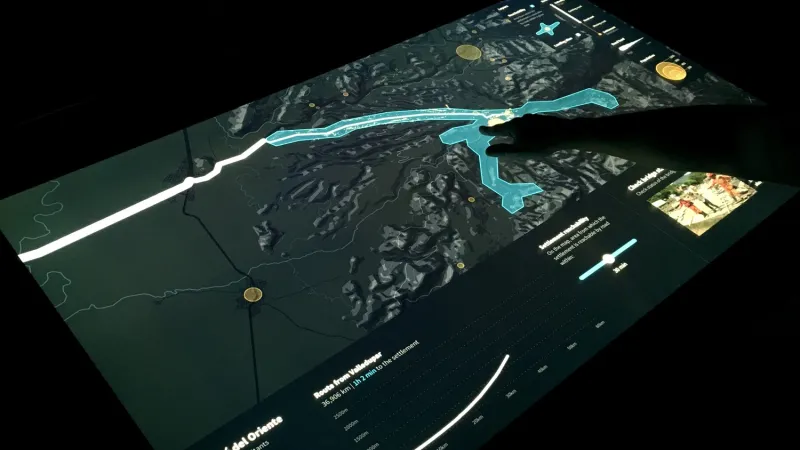
Research in the degree programme interface design
The interface design degree programme conducts research in current topics of human-computer interaction and information visualisation. It participates in national and international research projects and conducts contract research for companies and institutions. Finally, it systematically integrates research-based learning into the courses offered in its bachelor's and master's degree programmes.
The project-oriented module structure of the degree programme enables students to participate in research projects at an early stage. Students benefit from the proximity to the latest developments in interface design, which have often not yet found their way into textbooks. Students are systematically introduced to the methodology of modern design research. In this way, they acquire a competence profile that qualifies them for highly qualified activities in interface, product and service development, as well as for more research-oriented activities in scientific institutions.
The research activities in interface design are bundled in the Interaction Design Lab (IDL) and the Urban Complexity Lab.
Current research projects in interface design
More projectsMyAppMyData
App prototyping as an inclusive teaching-learning arrangement for the integrative development of digital skills at upper secondary level.
GraDiM: Granularities of Dispersion and Materiality – Visualising a Photo Archive on Diaspora
In collaboration with photographer Frédéric Brenner and his international project team, the GraDiM research project is developing theoretical and technical concepts for the visualisation of a photo archive with particular sensitivity for a collection documenting the Jewish diaspora.
CLIMATE MAPS: Visualising Local Climate Futures
Cooperation with the daily newspapers taz and UCLAB with the aim of conveying climate information via various channels using data visualisations. For this purpose, both physical and digital postcards with visualisations on different aspects of climate protection in Germany were designed and produced.
Amazonia as a Laboratory for the Future – Networking-Understanding-Communicating
Starting from collection objects, overcome borders and create spaces of networking, understanding and mediation.
What is (interface) design research?
Modern design research is interdisciplinary and combines the design and methodological skills of designers with problem-solving strategies and research approaches from other disciplines. At the core of design research at the University of Applied Sciences Potsdam is the conception and creative implementation of new problem solutions for an aesthetic, intuitive, meaningful and emotionally appealing interaction with digital technologies, products or services.
Research projects in interface design are often triggered by very specific questions: How can we protect ourselves from too much information and preserve our privacy? What does interaction with the Internet of Things look like? How can the visualisation and communication of climate scenarios change our behaviour with regard to global warming? How can novel and interactive approaches to cultural collections be developed? Can digital technologies be supportive in the treatment of mental illness? How can people with different skills best work together at a large, interactive table – e.g. after a natural disaster or when planning new transport routes in the city? What is the easiest way for them to interact with information displayed on maps or diagrams? What is the quickest way for them to mark objects on the map? And how does this information get onto their smartphones quickly so that they can use it later on the move - e.g. in the city?
These and many other questions are typical for our research projects.
The solutions are usually implemented in the form of prototypes and evaluated together with potential users. Prototypes make our ideas tangible for third parties. People can try them out, test them and get a good impression of whether they help to solve the respective problem better than before. A high aesthetic quality of our prototypes is a consistent feature of success and not an end in itself. On the contrary, numerous studies prove the positive correlation between beauty and other product characteristics such as usability.
Current research focus
Data and information visualisation
Typical problems are questions about the aesthetic and user-friendly visualisation of large amounts of data. The data sources in our projects are very diverse. They can be public data from urban space, but also in health and environmental research, in logistics or in the field of IT security, more and more data is accumulating that has to be prepared in a meaningful and aesthetically high-quality way for different target groups. In UCLAB, we are primarily concerned with the development of new cartographic and cultural visualisations for data and information flows in the digital and social city.
Sustainable Interaction Design
Can computers make people do the right thing? For some years now, the term »sustainable interaction design« has been used to describe research in design that hopes to trigger changes in attitudes and behaviour towards more sustainable lifestyles and work styles through digital products and services (e.g. as smartphone apps). Often, the aim is to make one's own behaviour visible, to put it in relation to other people and to propose and share goals for a more ecologically sensible life.
Relevant to research
PhD track
The programme offers master's graduates with an above-average interest in research questions and a high level of motivation for an academic career an established path to a doctorate.
Participation in research training groups and long-standing research cooperations with renowned universities in Germany and abroad offer numerous opportunities for the necessary cooperative supervision of our doctoral students at a university. The selection and connection to university disciplines depends on the topic.
The University of Applied Sciences Potsdam regularly advertises its own doctoral positions. The two research labs associated with the degree programme – the Interaction Design Lab (IDL) and the Urban Complexity Lab – also offer research assistant positions with the option of a doctorate.
If you are interested in a doctorate in the context of human-computer interaction or geo- and information visualisation, please contact the student advisory service.
Contract research
With the Interaction Design Lab (IDL), the degree programme has established a laboratory for applied research that supports clients from business and administration in the development of innovative human-computer interfaces and digital services.
In the IDL, user interfaces with a high level of user experience for enterprise, industrial, medical and e-government applications as well as for consumer products are conceived and designed with user participation, implemented as prototypes and examined for their effect and appropriateness using modern evaluation methods.
One focus in recent years has been the development of large, web-based knowledge portals (science communication), e.g. for the Helmholtz Centres, the German Archaeological Institute or the Federal Environment Agency. The aim here is to make complex scientific topics visible and tangible for a broader public.
Application & Contact
Dates & requirements for your application
The most important deadlines, dates and admission requirements for the bachelor's degree programme in Interface Design are compiled here. You can find out which steps you need to take for a successful application in the next section.
Dates
- by the 01st of April: register for the qualifying examination
- by the 15th of July: Apply for matriculation
- by the 15th of July: application for a higher semester in order to continue a degree programme started at the University of Applied Sciences Potsdam
Access requirements
- General university entrance qualification according to the Brandenburg University Act: General university entrance qualification or entrance qualification for studies at universities of applied sciences or previous vocational training recognised as equivalent.
- Passed aptitude test
This is how you apply!
In the following, we explain which aspects you should pay attention to from the registration for the qualifying examination to the matriculation (enrolment).
Further information
The following links provide you, and especially international applicants, with further information on the topics of application and enrolment at the University of Applied Sciences Potsdam.
International applicants
You would like to apply for studies from the first or a higher semester and have acquired your school-leaving qualification and/or university degree abroad? Then you can have degrees and achievements acquired abroad recognised and study with us.
Application & Enrolment Procedure
The application and study service provides information and advice on general questions regarding the application process, admission and enrolment at the University of Applied Sciences Potsdam, application for a higher semester, but also on topics such as compensation for disadvantages, part-time studies, waiting semesters and hardship applications.
Contact & Services
The student counselling service provides information and advice on general questions about studying as well as on topics such as choosing a course of study, application, enrolment and study organisation.
For subject-specific questions on module contents, credit transfer, examinations or study focus in the degree programme in interface design, the subject counselling service is the right place to go.
Student Counselling Service
Study and Examination Services
Study Info Service
studien-info-service@fh-potsdam.de
bewerbungs-service@fh-potsdam.de
campuskarte@fh-potsdam.de
Study Service
studien-service@fh-potsdam.de
Exam Service
pruefungs-service@fh-potsdam.de
Family Affairs Officer
Office hours
Tue and Thu 9.30 am – 1.30 pm
Accessibility and Inclusion Officer
Office hours
Monday and by appointment
